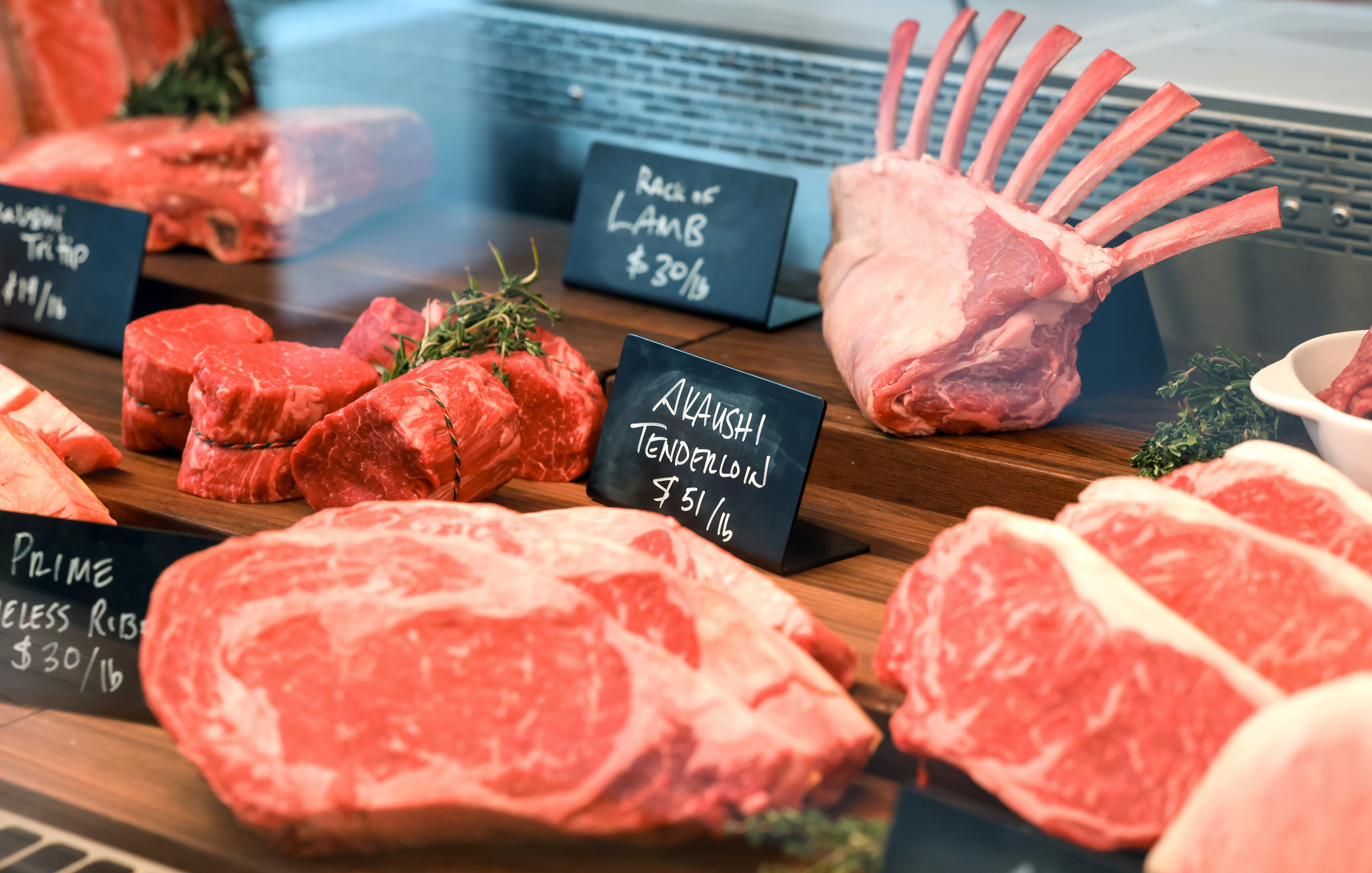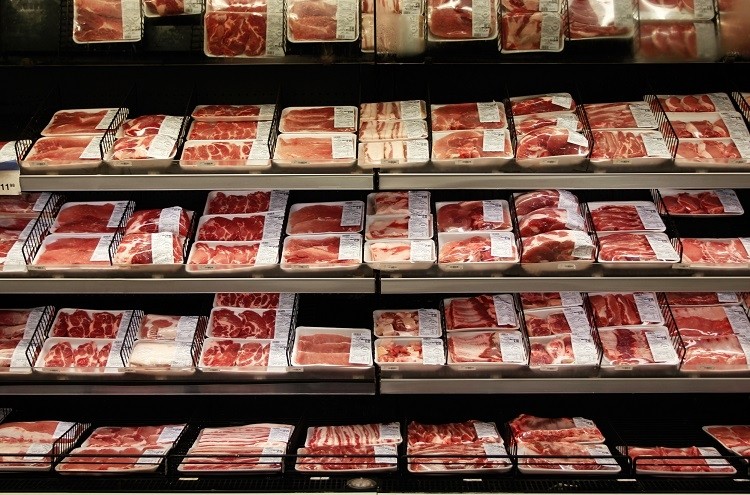Top Factors to Shop at Bagley Farms Meat Market Edwardsville IL for Costs Meats
Top Factors to Shop at Bagley Farms Meat Market Edwardsville IL for Costs Meats
Blog Article
Uncover the Art of the Butcher's Cut in a Modern Meat Market
In the ever-evolving landscape of modern meat markets, the butcher's cut has actually transcended its standard roots, combining age-old workmanship with contemporary methods. What really establishes the modern butcher apart is their capacity to forge a much deeper connection in between customers and the origins of their meat.
Advancement of Butchery Methods

The mid-20th century saw butchery strategies additionally fine-tuned by scientific insights into muscle biology and meat aging, boosting both inflammation and preference. Advancements like vacuum cleaner packaging and refrigeration extended item shelf-life, enabling butchers to expand offerings and boost top quality control. This period likewise marked the rise of customized devices, such as band saws and meat slicers, which boosted precision and efficiency in meat processing.
The 21st century has actually presented digital technology right into the butchery world. Electronic systems now aid in monitoring pet provenance and enhancing cuts to fulfill details client preferences. Additionally, a rebirth in artisanal butchery has actually emerged, mixing conventional skills with modern-day understanding to satisfy customers looking for ethical and lasting meat choices. This evolution emphasizes a vibrant interplay in between tradition and technology, meeting modern demands while preserving the craft's heritage.

Recognizing Meat Cuts

Comprehending the ins and outs of meat cuts is crucial for both butchers and customers looking for high quality and value. Each cut comes from a different part of the pet, presenting one-of-a-kind tastes, structures, and cooking methods. Proficiency of these distinctions not just improves culinary experiences but additionally takes full advantage of the utility of each carcass. For butchers, accurate cuts reflect ability and regard for the craft, making sure very little waste and optimal return.
The key classifications of meat cuts consist of primal, sub-primal, and retail cuts. Butchers after that break these down better into sub-primal cuts, prior to finally creating retail cuts available to consumers, like ribeye or tenderloin.
Understanding muscle mass make-up is vital; muscles utilized extra often by the pet tend to be tougher and are best matched for slow food preparation approaches, while less-used muscle mass, like those located in the loin, are more tender and suitable for cooking or roasting. Familiarity with these differences encourages consumers to make educated choices, improving their cooking endeavors.
Selecting Quality Meat
Selecting the ideal meat involves more than just selecting a visually appealing piece from the display. The art of selecting quality meat needs a critical eye and understanding of particular qualities that signify freshness and quality. Pay interest to the color; beef ought to have a bright, cherry-red hue, while lamb should show a soft pink tone, and pork a light pink. This suggests the meat is fresh and hasn't been exposed to oxygen for too lengthy.
Second of all, consider the marbling, which describes the white flecks of fat within the muscle. Correct marbling is a crucial indicator of inflammation and flavor, as it thaws during cooking, boosting the meat's juiciness. Keep in mind, greater marbling commonly correlates with exceptional high quality cuts, such as USDA Prime.
Texture is an additional vital factor; meat must feel strong to the touch, not slimy or extremely soft. Additionally, be conscious of the scent. Fresh meat needs to have a clean, neutral scent, devoid of any sour or repulsive odors.
Combining Cuts With Cooking Approaches
Efficiently pairing cuts of meat with the proper food preparation approaches is vital for attaining optimum taste and texture. These methods improve the meat's all-natural tastes and make certain a juicy finish.
Conversely, tougher cuts like brisket and chuck roast are rich in collagen, which breaks down into gelatin when cooked slowly. These cuts are suitable for braising or slow-moving roasting, permitting the meat to soften with time and create deep, intricate tastes. Cuts such as brief ribs and pork shoulder fare well with slow-cooking approaches, where extended cooking times transform their durable textures right into delicious meals.
Lamb shanks and oxtail, which need extended cooking to tenderize, are perfect prospects for cooking or sluggish simmering. These techniques coax out rich, passionate tastes while preserving moisture. By understanding the unique characteristics of each cut, cooks and home chefs alike can raise their culinary productions, making certain each meal is both satisfying and memorable.
The Butcher's Duty Today
Browsing the developing landscape of the modern meat market, the butcher's duty today prolongs past simple preparation of cuts. Contemporary butchers you can look here are cooking artisans, educators, and supporters for sustainable techniques. They connect the gap in between the farm and the fork by making certain honest sourcing, understanding pet husbandry, and prioritizing openness in the supply chain. This shift mirrors the growing customer demand for top quality over quantity, where provenance and pet welfare are extremely important.
In addition to crafting exact cuts, butchers now engage straight with customers, using look at this site cooking advice and customizing options to suit specific needs and preferences. Their proficiency in meat aging, marbling, and taste profiles empowers customers to make enlightened decisions, boosting their cooking experiences. This tailored service exemplifies the butcher's progressing duty as a trusted consultant in the cooking area.
Moreover, butchers are critical in decreasing waste, utilizing whole animals to produce varied items such as sausages and stocks - bagley farms meat market edwardsville il. This extensive technique not just values the animal but likewise lines up with modern sustainability objectives. In this way, the modern butcher symbolizes both custom and advancement, adjusting to an ever-changing market while maintaining the artistry and integrity of their craft

Verdict
Proficiency in recognizing diverse meat cuts and top quality indications equips butchers to give informed suggestions, aligning details cuts read with optimum cooking techniques. By honoring historic techniques while accepting modern needs, the butcher's role stays important in today's sophisticated meat market.
Report this page